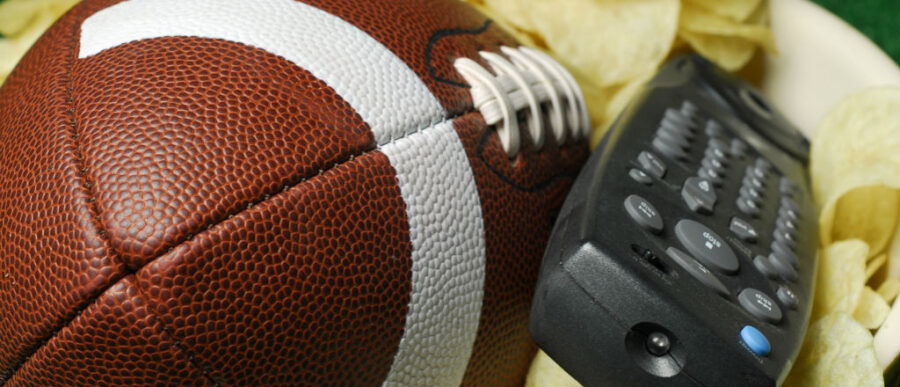Advertisers spent $5 million each to air an ad at this year’s Super Bowl – more if you count the millions that go into production and paying talent. But few companies will pull off the ultimate measure of Super Bowl ad success of parlaying 30 seconds in front of 100 million pairs of eyeballs into a bump in sales.
“You can’t just have a typical ad because people are going to dissect and go into all sorts of details,” noted Wharton marketing professor David Reibstein. Reibstein hosts an annual Super Bowl party for Wharton marketing faculty. With the home team playing, the guests were all “mesmerized” by both the game and the ads. Usually, he said, “we chat, chat, chat, but when the commercials come on it’s quiet.”
A year ago, in the wake of President Trump’s then-recently issued travel ban, brands including 84 Lumber, Budweiser and Coca-Cola aired ads that openly took political stands on diversity and immigration.
Brands seemed to play it safer this year, sticking with more broadly appealing draws like kids, animals, humor and big surprises. There were also several ads that referenced companies’ charitable efforts.
“I don’t think there was any chance that Martin Luther King was trying to sell a car or a truck in that sermon, so it was a high-risk strategy that fell flat on its face.”
Reibstein joined Wharton Business Radio on SiriusXM channel 111 to discuss ads that made a strong impression this year. Here are five that stood out:
1.Tide
https://youtu.be/doP7xKdGOKs
The Tide ads stood out for poking fun at advertising clichés, but also for saying very little about the brand or its products. (The spots’ key line: “What makes it a Tide ad? There are no stains.”)
“It’s interesting because maybe people thought they were going to address [the recent controversy around the YouTube ‘Tide pod challenge’] — maybe they’re working to recover their name,” Reibstein said. “If that’s the case, there’s only one way they can justify any of this spending – and its enormous numbers we’re talking about, particularly for Tide: It’s got to have an impact on sales. That’s the only criteria you should be using to try to evaluate these as the dust finally settles.”
“… It’s got to have an impact on sales. That’s the only criteria you should be using to try to evaluate these as the dust finally settles.”
2. CURE Auto Insurance
One company that may have a good chance at seeing its investment pay-off is CURE Auto Insurance, a Princeton, N.J.-based company that aired a spot taking shots at Patriots’ quarterback Tom Brady for the “Deflategate” controversy from a few years ago.
The ad probably alienated the New England fans watching, but it likely hit in a positive way with CURE’s prospective customer base, drivers living in Eagles territory.
“My guess is a number of people — particularly in Philly but maybe even beyond — the next time they are looking for auto insurance, they’re going to think about CURE as an option,” Reibstein said.
3. Dodge
https://youtu.be/SlbY1tGARUA
Dodge was almost universally panned for an ad that included one of Martin Luther King, Jr.’s last sermons. The King Center in Atlanta was among those who condemned the ad, and noted in a tweet that neither the organization or King’s daughter Bernice were the ones who approved the use of the speech.
“They’re not going to dodge criticism for that one,” Reibstein said. “I don’t think there was any chance that Martin Luther King was trying to sell a car or a truck in that sermon, so it was a high-risk strategy that fell flat on its face.”
But Reibstein noted that while Dodge is facing a lot of flak right now, it’s unlikely that the commercial will have a significant negative impact on sales. “My guess is the biggest impact will be which ad agency they use next year,” he noted.
4. Amazon
One of Reibstein’s two favorite ads of the night was the commercial for Amazon Alexa (the other was the NFL’s spoof of “Dirty Dancing” featuring Eli Manning and Odell Beckham, Jr.). The Alexa ad featured celebrities including Cardi B and Anthony Hopkins – and also a cameo from CEO Jeff Bezos.
Reibstein appreciated that the spot actually highlighted the product and how it works, and that it also featured Bezos, who he described as one of the few company heads who could make an impact by helping to advertise his own product.
“My guess is that a lot of CEOs want to do it … and have to be talked out of it,” Reibstein said. “You can’t pull that off very easily; I think Elon Musk could do it, but not many CEOs are that identifiable.”
5. Budweiser, Stella Artois and Hyundai
While advertisers stayed away from overt political statements this year, several used the Super Bowl to draw attention to their charitable efforts. Stella Artois’s ad included actor Matt Damon describing how the brand was helping bring clean water to developing countries. Budweiser showed how the company is delivering water to people affected by the California wildfires and the hurricanes that impacted Texas, Florida, Louisiana and Puerto Rico. The Hyundai ad highlighted how a portion of purchases of its vehicles go toward research into curing pediatric cancer.
“There are so many companies today that are being looked at as the evil empire, so if you have a positive association and a positive impact to showcase, that’s going to be appreciated more and more by consumers,” Reibstein said. “It also does something good for the employees and for how people feel about working for that company.”



